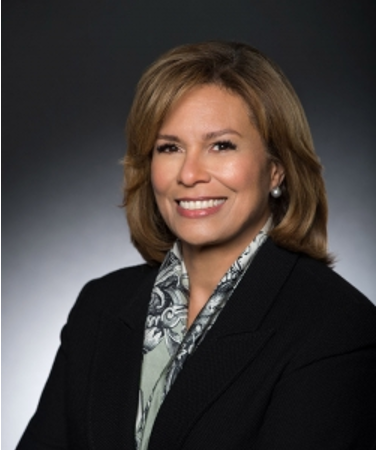Webinar Recap: Diversifying the Board - Setting, Communicating, and Attaining Critical Goals
September 16, 2020 (Replay at end of page)
Last week we hosted our 18th ABA Live! on the topic of Diversifying the Board. We invited Delia Barker, Programmes Director of the Roundhouse in London, Matrice Ellis-Kirk, Chair, Board of Directors of the AT&T Performing Arts Center in Dallas, and Debbie Storey, President & CEO of the AT&T Performing Arts Center to share how they have guided their organizations to improve board representation with the right voices at the table and how they are continuing on that path today.
A Brief Overview of the Progression of Board Diversity at AT&T Performing Arts and The Roundhouse
We started our webinar by asking our panelists to give us a bit of history of how their boards have changed over time.
AT&T Performing Arts Center
When Matrice joined the AT&T board in 2014, she found that they had a tremendous working board that was highly engaged, but it lacked diversity in terms of gender, LGBTQ, ethnicity, and thought. Most of the board resided in two Dallas zip codes. Upon taking her role as chair, Matrice made it her number one initiative to make the board look more like the community in Dallas. When Matrice became chair, the board was 13% diverse. Today, the board is 36% diverse – one of the most diverse in the Dallas area.
The Roundhouse
When the current version of the Roundhouse began the organization went through a huge refurbishment and the board had been focused on driving the income needed for that project. Delia joined the Roundhouse at the same time as the current board chair, and she said it was immediately clear that they were in a time where the organization and the board need to be more relevant and reflective of the community and the conversations they were trying to have. They are a values-based organization and needed to show that they were “putting their money where their mouth was” in terms of leadership of the organization. The organization was aiming for gender parity on the board and set diversity targets for Black, Asian, and Minority Ethnic representation. To set their targets, they modeled what their staff and board should look like based on census population data. Additionally, Roundhouse has always two young board members (25 years old or younger), who have the same role as full-fledged board members. Delia believes they contribute significantly to achieving thought diversity on the board. The organization has met its goals for diverse board members and is now moving the targets higher.
Key Lessons for Diversifying the Board
Delia, Debbie, and Matrice were generous in sharing what they found to be critical steps in their journey to diversifying their boards:
Start with a Skills-Based Recruitment Strategy when Seeking Diverse Candidates
Both Matrice and Delia emphasized the importance of starting with a focus on the skills you are trying to recruit and the communities in which you could find those skills. Matrice built a skills matrix that reflected all the skills needed for a high functioning board, and then identified members of the community who had those skills and started cultivating relationships.
As Delia put it, “There’s nothing more depressing than people recruited for diversity without the skills lens. You are setting them up to fail, and then people can say they have tried it and it didn’t work.” Similar to Matrice, Delia’s starting point in looking for diverse board members was with the skills needed in mind and then looking in diverse pools for those talents.
Build Authentic Relationships During the Recruitment Process
When asked about how they persuaded diverse candidates to be willing to join their boards, Delia shared that it depended on each individual. Each cultivation is personal. People wanted to know what the organization is actually doing to move its vision forward and what challenges they are facing in making progress – lip service and glossy brochures are not enough. Most board recruits are busy, so they want to know why this organization and why my time. Delia noted that cultivation of these relationships didn’t always start at the top of the organization, and no one was briefed on what they should or shouldn’t say. She believes everyone has a “yes factor” – you just have to understand what it is for each individual.
Matrice also emphasized the importance of building relationships during the recruitment process. Existing AT&T board members spent time with prospective board members to explain the organization’s vision and help them see what role they could play in achieving that vision. This time was as much about allowing recruit’s voices to be heard in terms of what they would like to see in the organization, as it was about sharing the organization’s vision.
Ensure Diverse Board Members Have Visible and Meaningful Roles
Debbie noted that it is critical to have to have key diverse board members in order for other diverse individuals to be interested in joining the board. Early on Matrice appointed a woman of color as chair of the nominating and governance committee. Debbie believes this was highly impactful because it signaled to other board recruits the real value they could bring to the organization. Delia echoed these comments saying how important it was for recruits to see the values they espoused played out on the board before they considered it. Debbie noted that there were three key things that were persuasive to AT&T Performing Arts board recruits:
Everyone believed in Matrice’s commitment to diversify the board – not to improve statistics, but to diversify thought leadership
Matrice placed diverse board members in leadership roles right from the start, which made it clear that the board really wanted diverse voices at the table.
They had a passion and determination to be a true gathering place for the entire community, not just a segment. Debbie believes everyone wanted to be a part of that change.
Genuinely Communicate Your Commitment and Dedication
Delia noted that following the murder of George Floyd, many publicly funded organizations put out messages of anti-racism immediately. She said that because of the diversity of thought they have in their board room, they sat tight for a bit as they wanted to be very thoughtful in their response. Their Diversity & Inclusion working group spent a significant amount of time determining what message they wanted to send out to the public. They ultimately put out an anti-racism statement that included a list of commitments and asked the public to hold them accountable. She believes this type of genuine response was fostered by the diversity of thought on their board.
Advice on Staying Motivated and Committed
Given the environment we are in today requires so many tough choices, we asked our panelists to offer advice on staying motivated and committed.
Delia: Start somewhere. Look around at peer organizations who are getting it right and ask for advice.
Matrice: Always keep in mind that it is an iterative process, first and foremost. None of it can get done overnight. Stay with the focus and keep the vision clear in terms of what you want to do and understand it may not work every single time. Take those moments that are wins.
Debby: Don’t ever believe that people get the value of diversity the first time you explain it. You have to communicate it over and over again. Continually focus on demonstrating the value that comes from that diversification.
Additional ABA Support
DE&I Topic Center: The Diversity, Equity, and Inclusion Topic Center provides resources, data and support to help you improve your organization’s representation and create an inclusive environment for audiences, patrons, staff and artists.
DE&I Vendor/Consultant Compilation:
Many arts organizations are looking for DE&I vendors or consultants to help with strategy, training or other critical support areas. But it can be hard to find someone trusted to work with – especially when there is so much demand.
ABA’s DE&I Consultant Compilation:
Arts and culture organization team members fill out a 10-question survey about their experience with consultants
We consolidate ratings and share reviews back to participants and the membership






